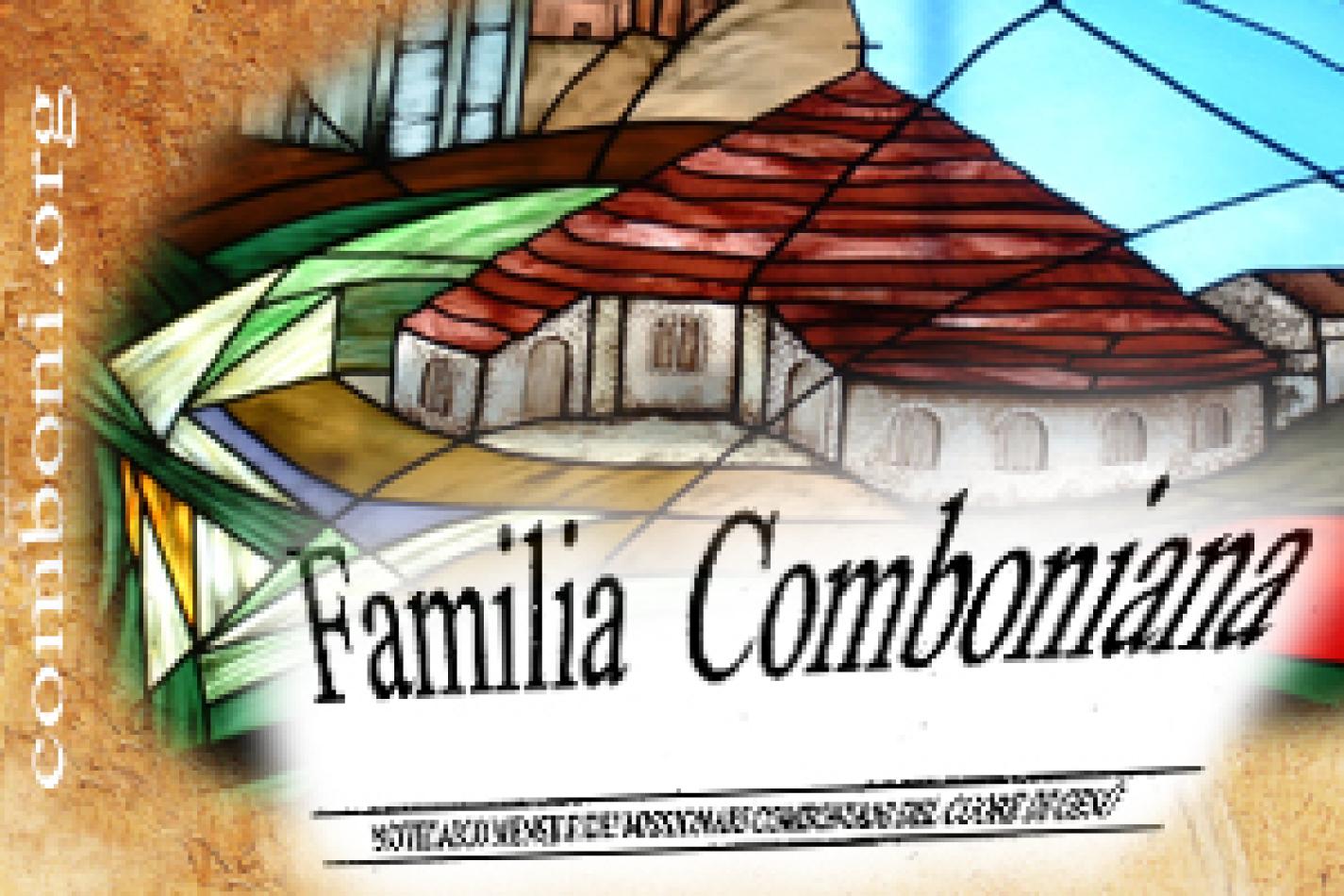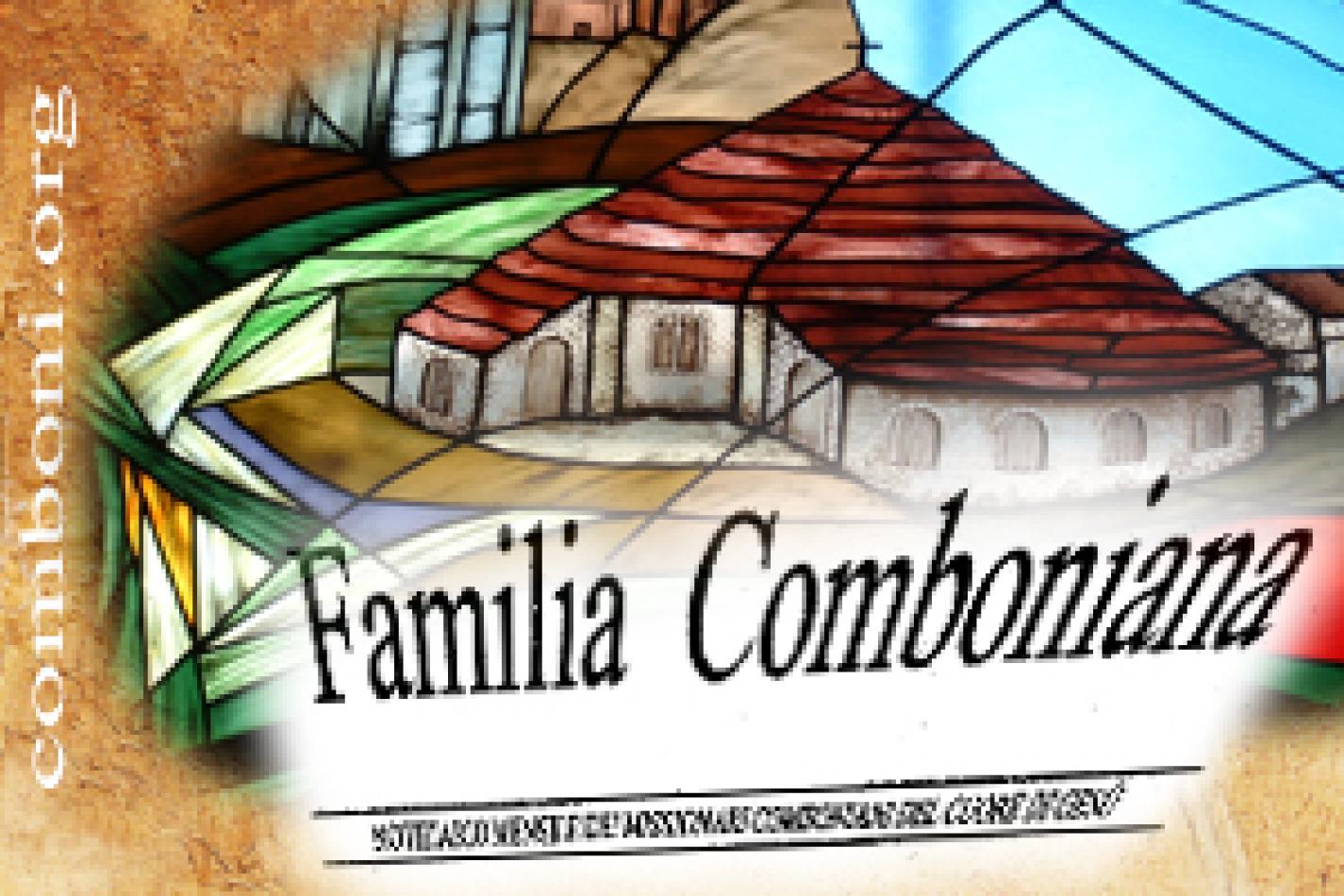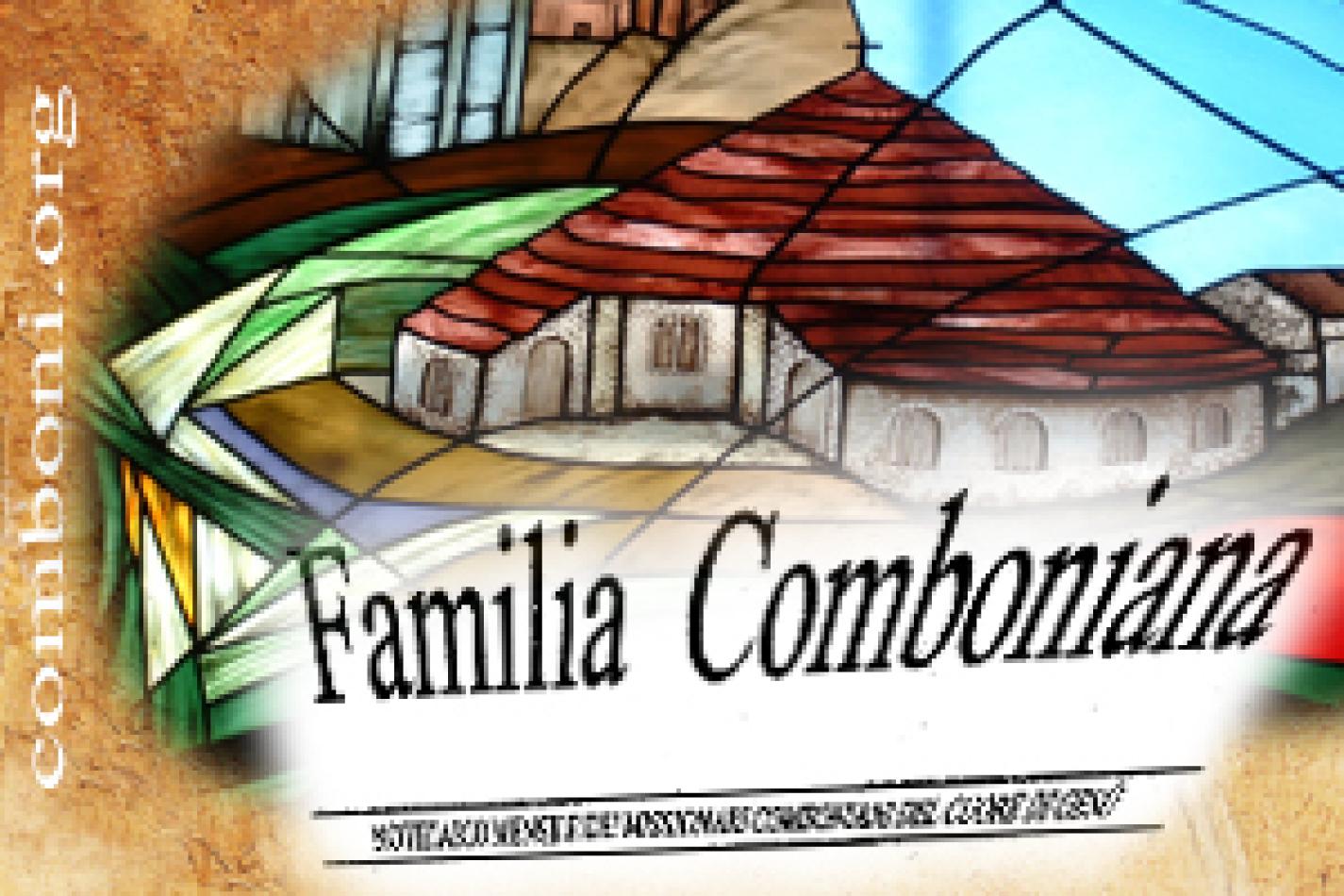Daniel Comboni
Comboni Missionaries
Institutional area
Other links
Newsletter
Rome, March 2018
«Our approach is selective – writes Fr. Danilo Castello, Comboni missionary –. We will deal only with the second part of the RL. Nevertheless, it is necessary to posit some general premises. The encounter with the RL must bring out the Truth in three directions that we do well to anticipate: See the truth about ourselves, first of all; See the truth of the text of the Rule of Life; “Impassioned ties” with the Founder. (…) The personal encounter with Christ as our Founder lived it, fascinates, convinces and stimulates us. It is, also surprisingly contemporary not only in Pope Francis but also in other recent popes. Above all, it greatly attracts the spiritual sensitivity of the youth of today. It is in this encounter that we find the truth, the mission and the strength to accomplish it. “It is not much knowledge that fills and satisfies the soul but perceiving and tasting things internally” (St. Ignatius).»
ENCOUNTER WITH THE RULE OF LIFE
Truth is an encounter
Premises
Our approach is selective. We will deal only with the second part of the RL. Nevertheless, it is necessary to posit some general premises. The encounter with the RL must bring out the Truth in three directions that we do well to anticipate.
- See the truth about ourselves, first of all – The surrounding environment, for many reasons (which here we take for granted), is not at all suitable for a discussion on anything to do with regulation. What is my deepest “feeling?" Veneration, disaffection or just indifference? What are the conditionings, whether personal or due to formation, have traced the outline of that interior sensibility which, almost by instinct, we bear within ourselves? In the past, one lived peacefully in a spiritual climate of “the cult of the Rule”, which made following the norm one’s own ideal of holiness, later theorised by Pius XI: “Show me a religious who has constantly observed his Rule and I will make him a saint for you”. Times have changed and quite fast. The recognition of the centrality of the person of the religious was one of the most audacious decisions of the Council. It was also one of the three basic themes of the Chapter. The recovery of liberty as the ability to decide things for oneself, according to an interior principle. It is no longer the norm but the event which guides our life. It is useful, therefore, to rediscover the ability to listen to the Spirit. And so we seek a return to experience as the theological place for seeking the “Will of God”. The Spirit of Christ is a gift for each day, a living voice in all circumstances.
- See the truth of the text of the Rule of Life – The authentic and critical encounter leads us to see the truth of the RL itself. We well know the limits and merits of historical conditionings, often opposing indication, that still allowed us to overcome difficult moments. We find tensions within us that emerge energetically at every turning point in our history. We are here to keep and fructify that which is good (the good fish), and leave aside that which is bad and tied to time. Having said this, we must immediately clarify that the text we have in our hands is unequal. Joining together a constitutional text (it can only be changed with the authority of the Holy See) and directorial text (a Chapter has the authority to change it) may well be an easy solution but it is “dissuasive” (Fr. Silva). The supplement given by our confreres on the commission (giving just the constitutional text) increases the confusion. This is not only because we no longer know precisely which text we should reflect upon but also because the text of the supplement does not correspond to the text we have at hand, precisely concerning a burning issue that still divides our Institute, number 13 which establishes the aim of the Institute. With the times that are in it, this is no small matter!
- “Impassioned ties” with the Founder – To what extent is this to be found in the RL? Comboni “narrates” to us how he lived the Mission. How much of his “perception” has become spiritual breathing in the text? I take as my guide a non-Comboni expert who has given his opinion on our RL: Fr. Santiago Gonzales Silva (Claretian). I found, in one of the supplements rather intriguingly entitled: What use is the Rule of Life. My reflection is confined to the second part: Consecrated life, community and prayer life. In answer to the lacunae and omissions found, I shall make proposals inspired by one of the most authoritative presentations in the history of the Institute made during the Symposium in Rome (Manuel Augusto Lopes Ferreira, Notiziario PI 3/17).
SECOND PART
The second part of the RL is exceeded in length only by the third on evangelisation. It is structured according to the classical topics of consecration, community life and prayer. It is precisely here, especially in the directorial part, that the closeness of the Founder is blurred. To return to the simplicity of the origins – the Rules “even though they may be the fruit of deep reflection and prolonged study” they must be based upon “general principles”… - and it might help to reduce the tension between religious life and apostolic life, and recover a little of that meaningful radicalness and freedom of the first missionaries. Ii it not possible to continue in this second part that “transfusion of memory” of which the General Council speaks in the January issue of Famiglia Comboniana? How much good it would do us to hear again in the renewed text of the Rule the echo “of the eloquence of the founding gestures” as a stimulus to reliving the exalting mysticism of the mission!
Consecrated Life Nos. 20-35
- Merits and limits – We have here a text that is intended to be complete but proceeds with difficulty and a degree of dispersion. Excessive explicit references to the related canons do give “formal precision”, but also represent a somewhat restrictive arrangement. In brief, nothing is lacking but the text seems to convey a doctrine that is “cold” and uninspiring. It lacks spiritual breath and to be on a downward slope towards the devotional. What is absent are the “impassioned ties” with the Founder which animates the first part. Here we have distanced ourselves a little from the dynamism that regenerates every time one approaches the founding event. Then, as regards the Sequela Christi, the directorial text (for once), is much more incisive than the constitutional text.
Fidelity and liberty – The vow of obedience is treated in a thorough manner. Nothing has been left out. Yet, it is exactly here that we note the failure of the spirit of the “Founder”. The attention given to the religious observance is to the fore. Let us not mince our words: consecration to the mission and religious consecration are not the same thing in the mind of Comboni. The central place occupied by obedience in the legacy he leaves to his followers has a quite different theological foundation: it reflects in close-up evangelical radicalness and fidelity.
- Proposal for overcoming the limits indicated
Integrate consecration and mission (Notiziario PI 3/2017, p. 12, insert by Fr. Manuel Augusto). Integrating consecration and mission is the determining sign of a configuration illuminated by the light of the “primigenia inspiratio”. The missionaries are invited to make a solemn consecration and to live in complete dependence on the superiors. This presupposes a spirituality made up of radicalness that implies total dedication. This is one way to overcome the tension between religious life (the spirituality of observance) and missionary life. “As a matter of fact, the first crisis generated in the Institute, then transformed into a religious Institute, as shown by Fr. Vittorino Dellagiacoma in his study L’Eredità del Comboni, was born of the tension between responding to the requirements of consecration (religious) and the requirements of the mission, the indications of consecrated life and those of missionary life”.
To recover the radicalness the obedience and radicalness of Daniel Comboni to the will of the Father, rediscovered and re-lived in the daily encounter with Christ. Fidelity to the will of God links up in such an exceptional way with strong interior liberty as to become a strongly prophetic voice in the Church. Comboni consigned this peculiar spiritual world to the Rules. This is the prophetic dimension he left his followers. It is a robust spirituality that keeps together, without separating them, a visceral love for the Church and a lively spirit of internal liberty. The epochal crisis we are undergoing needs instruments that reflect in all their parts the spiritual breath of our origins.
Community life Nos. 36-45
- Merits and limits - “As we come to this section the text seems out of date. The grace of community life … Unfolds as gifts for the good of all … source of great fecundity. The commandment of Our Lord: “Love one another as I have loved you” is held to be the foundation of community”. “No contest. There is a foundation in God that precedes a corporate agreement between the components. Yet, the translation goes down a level: a bulleted list of various requirements. “The missionaries make community life consist in living together in a regular way, seeking together God’s will and sharing prayer, property, planning, work and moments of relaxation. In the Instruction Fraternal life in community, published, it is true, some years later, gives a quite different impression. Here the text aims at an exact objective. “Each missionary belongs to a local community. Under no circumstances may a missionary live alone on a permanent basis”. We must have guarantees against the spread of loose cannons. This is the proposal:
- Integrate community and apostolate in the text - “The tension between religious life and apostolic life runs all through our history and we are still seeking a model of fraternal life, that integrates with apostolic life and makes us better apostles... The Comboni icon of the cenacle of Apostles reminds us that we are called to live a fraternity for the mission, to integrate creatively fraternal and apostolic life …” Comboni leaves to his Institute a clearly apostolic identity”. Without equivocation, let us return to classical language.
- Community discernment – In the Cenacle of Apostles the cohesive element is the solidarity between persons consecrated to the same ideal and together seek to achieve it. In the letter to his father dated 8 March 1858, Comboni mentions the method used by his companions to find solutions and uses three verbs that we must consider our vademecum of solidarity: “Once evening comes and the night, we hold a council: one proposes, discusses and prays”. Together we seek:
- How to remain with Christ who lives in us with his desire of making known the love of the Father. The project expressed in the RL is summed up in two expressions: follow Christ with a lifestyle as similar as possible to his and, secondly, to find the best way to announce the Gospel: making proposals and discussing them together.
- How to live out the power of consecration. In order to emphasise that this projects is not of human origin, we commit ourselves publicly, before the members of the group that accepts us almost as if to say: I am counting on you just as you can count on me. We form a partnership with Our Lord.
- Community discernment – In the Cenacle of Apostles the cohesive element is the solidarity between persons consecrated to the same ideal and together seek to achieve it. In the letter to his father dated 8 March 1858, Comboni mentions the method used by his companions to find solutions and uses three verbs that we must consider our vademecum of solidarity: “Once evening comes and the night, we hold a council: one proposes, discusses and prays”. Together we seek:
- What about friendship? It is not in the first place because we have not come together because of similar tastes, cultures or whatever. We did not choose ourselves but we were chosen. Only later on, after much discussion during which there emerge disagreements between men of different age, nationality and temperament can we call ourselves “friends of the Lord”. Physical separation does not break the tie. It is not manifested by sentimental effusions but with the exchange of apostolic initiatives. “Friendship is certainly a hot topic, both sublime and painful, in contemporary religious life. Praised by some and suspected by others, it is a source of illusions and disappointments but it is a style of communion and mission plan for the communities that live out their vocation in fidelity. Religious friendship is a style of interpersonal relationships and involves the entire life of the community … It is the prerogative of tension, of journeying, of the end and not only the beginning; it is vocation and mission for all, not just the odd one. It is born anew if it is lived in the today of history and if it puts down its roots in the liberty of the persons who follow the attraction of the mystery of God. It is potential, goal and hope for all” (Mongillo op).
Prayer life Nos. 46-55
- Merits and limits - “The whole is composite…”. The Comboni makes the Word of God his fundamental prayer … he welcomes Christ as the living Word of the Father. He recognises him in Scripture and in the Church, and seeks his presence in events and in human encounters”. The tone of this prayer is more missionary in its dynamic totality than in its directed application. Such great openness creates the problem of personalised welcoming. The Eucharist is called the source and summit of evangelisation. The Council citation is flanked by a canon that is too doctrinal. In any case it is a model that is kerygmatically pregnant: “each day finds refreshment, light and strength to proclaim to all … the resurrection of Christ”…
Substantially, we have a complete doctrinal text with extremely broad references and wide open horizons. Once again it yields to the totalising tendency to embrace all the elements. A broad picture that embraces almost everything risks becoming dispersive and “composite”. The unifying element that gives meaning and inspiration to “what is lived” is lost sight of. It is a unique thought which, however, keeps itself forever young because it is in contact with continually evolving history.
- Proposals – Regarding prayer, Comboni felt that the priority of priorities is to be found in the sphere of interiority. His insistence on meditation for coherent fidelity to the mission is an invitation to assume corresponding attitudes.
- Rediscover the ability to listen to the Word – which becomes listening to God, oneself and one’s own history. We would hope for a text that is unifying (non-dispersive) in which there is the spiritual breath of those who have lived that sort of life where the attraction of interiority was unconditional obedience to the “law of the spirit” who speaks through experience and is a source of creativity and prophecy.
- Recuperate the taste for the personal encounter with Christ - Comboni encountered Christ in his life. He was fascinated by his dream of announcing the Gospel to those in darkness. He made it his life-project. From passion for Christ he moved to the consecration of his life and finally to identification with Him even to feeling that it was Jesus himself who underwent such sufferings in him for the salvation of Africa. This gave rise to the mystic of the Mission. He wanted his missionaries to be like that. “The fundamental characteristic of the missionary figure in the mind of Comboni was: great freedom in spiritual and religious life … strong interior piety with a spirit of sacrifice and humility and creative ability to continually adapt”. (F. Di Giorgi, Le dimensioni dell’incontro, cultura e spiritualità in Comboni, p. 215). In the Institute, spirituality had a role that was central, fundamental and constitutive.
- Prayer life structure should here find its focus and ensure, in the quotidian and annual cycles, the help to renew the experience of the personal encounter with Christ, the source of inspiration and creativity.
If we want to “sincerely value” the constitutional text, this is the “essential starting point”. Everything depends upon re “reconnecting with the founding experience”. The more it is transparent, the more we succeed in transmitting the grace that identifies us as a community of people consecrated to the mission.
The personal encounter with Christ as our Founder lived it, fascinates, convinces and stimulates us. It is, also surprisingly contemporary not only in Pope Francis but also in other recent popes. Above all, it greatly attracts the spiritual sensitivity of the youth of today.
It is in this encounter that we find the truth, the mission and the strength to accomplish it. “It is not much knowledge that fills and satisfies the soul but perceiving and tasting things internally” (St. Ignatius).
Fr. Danilo Castello, mccj




